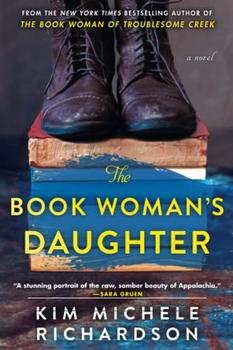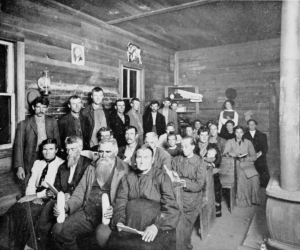Summary | Excerpt | Reading Guide | Discuss | Reviews | Beyond the Book | Read-Alikes | Genres & Themes | Author Bio

A Novel
by Kim Michele RichardsonThis article relates to The Book Woman's Daughter
 At one point in Kim Michele Richardson's novel The Book Woman's Daughter, protagonist Honey Lovett discovers that a family friend attended a Moonlight School. The Moonlight Schools were the brainchild of Cora Wilson Stewart (1875-1958), an elementary school teacher and school superintendent in Rowan County, Kentucky. Born in the community of Farmers, Kentucky, she attended the Morehead Normal School (the term "normal school," derived from the French "école normale," referred to a teacher-training college), later known as Morehead State University, and the University of Kentucky before beginning her teaching career at the age of 20.
At one point in Kim Michele Richardson's novel The Book Woman's Daughter, protagonist Honey Lovett discovers that a family friend attended a Moonlight School. The Moonlight Schools were the brainchild of Cora Wilson Stewart (1875-1958), an elementary school teacher and school superintendent in Rowan County, Kentucky. Born in the community of Farmers, Kentucky, she attended the Morehead Normal School (the term "normal school," derived from the French "école normale," referred to a teacher-training college), later known as Morehead State University, and the University of Kentucky before beginning her teaching career at the age of 20.
Stewart quickly discovered that the parents of many of her students were illiterate, and she decided to open the county's classrooms to the adults of the area. She reasoned that most of her hoped-for pupils would need to work during the day, and therefore proposed the classes be held at night on evenings when the moon was bright enough to light the way to the schoolhouse, earning them the nickname of "Moonlight Schools." Teachers volunteered their time for the endeavor.
Fifty schools opened their doors to adult students on September 5, 1911. Expecting turnout to be light initially, Stewart was shocked when more than 1,200 men and women showed up that first night. Ranging from 18 to 86 years of age, they came from a broad cross-section of professions, representing farmers, shopkeepers, housewives and clergy. About a fourth of those attending were completely illiterate, with the rest having received minimal education throughout their lives. Within a year, enrollment had grown to 1,600 and spread across several counties. By the 1914-1915 school year, the number of adults who had learned reading and writing in Moonlight Schools was approximately 40,000. The idea continued to catch on, and by 1916, 18 states had opened Moonlight Schools. It is estimated that over the course of 20 years, some 700,000 individuals were educated through this program in Kentucky alone. Perhaps the schools' most important feature was that they were open to people who might have otherwise been excluded from educational opportunities, including women and poor laborers.
Stewart was adamant that adults needed different instructional material than children, and so developed a curriculum that included The Rowan County Messenger, a newspaper that was written with short, easy-to-read sentences and word repetition. She also published the Country Life Readers, a series of adult primers, reprints of which can still be obtained today. The material was designed both to help her students learn to read and to encourage them towards patriotic and Christian values.
Stewart's efforts for literacy didn't stop with the Moonlight Schools. During World War I, she discovered hundreds of thousands of recruits couldn't read, and so she wrote and published another textbook, The Soldier's First Book. She served as the first woman president of the Kentucky Education Association, and in 1926, she became director of the National Illiteracy Crusade. She also served as the chairperson of President Herbert Hoover's Commission on Illiteracy from 1929 to 1933. She retired from public life soon after, but left an important legacy of advocacy for and access to education.
A Moonlight School in Kentucky c. 1916, from Press Reference Book of Prominent Kentuckians
Filed under People, Eras & Events
![]() This article relates to The Book Woman's Daughter.
It first ran in the June 22, 2022
issue of BookBrowse Recommends.
This article relates to The Book Woman's Daughter.
It first ran in the June 22, 2022
issue of BookBrowse Recommends.
Believe those who are seeking the truth. Doubt those who find it.
Click Here to find out who said this, as well as discovering other famous literary quotes!
Your guide toexceptional books
BookBrowse seeks out and recommends the best in contemporary fiction and nonfiction—books that not only engage and entertain but also deepen our understanding of ourselves and the world around us.